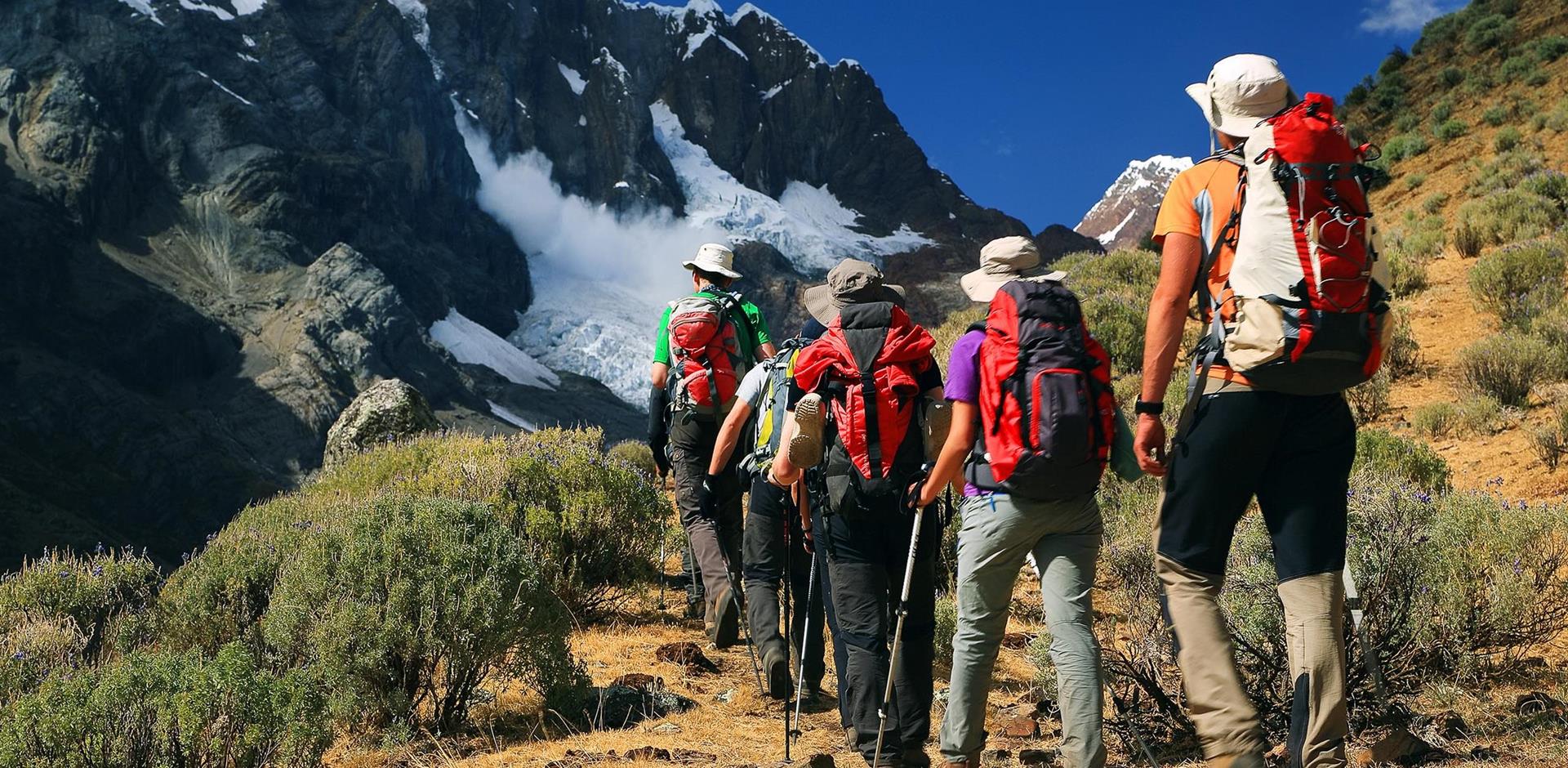Follow in the footsteps of the Incas. In their wisdom, they decided against sticking to the valley path and chose to take the scenic high road on their journey to the Lost City of Machu.
The Incas carved the iconic trail along a ridge that descended from the sacred summit of Salkantay and culminated at the 15th-century citadel which was built for the Inca emperor Pachacuti.
Explore these historic paths which wind through the mountain scenery dotted with unique stone outposts. These markers were built by the Incas to point out a mountain view or natural wonder. See how they precariously perch on narrow ledges or spill down plunging slopes with water channels flowing through them.
We have chosen the five best trails, whatever your ability or budget, which will lead you to Machu Picchu high on the mountain ridge, 2,430 metres above sea level, voted as one of the new seven wonders of the world.
Classic four-day Inca Trail to Machu Picchu
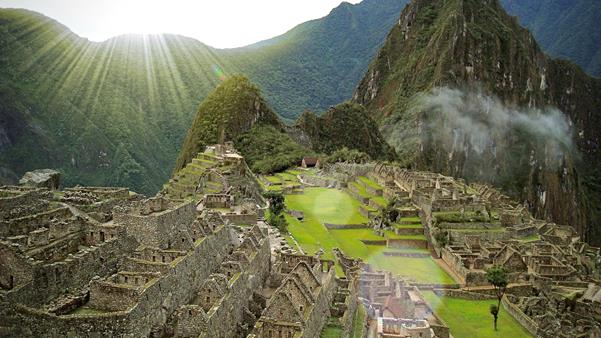
The 43- kilometre trek dramatically arrives in Machu Picchu at sunrise on the final day. The trek is rated moderate and suitable for a reasonably fit person. You should be able to hike up to eight hours, with breaks, in a single day.
It can be fairly challenging with altitudes of 4,200 metres being reached, so ensuring you are well acclimatised is important. If arriving from sea level, plan to spend at least three full days in Cusco or the Sacred Valley prior to the trek to acclimatise.
This will allow time to visit the city of Cusco and nearby Inca ruins at Sacsayhuaman, Q'enko, Pucapucara and Tambomachay. You can also explore the Sacred Valley visiting the traditional market town of Pisac and the fascinating Inca fortress at Ollantaytambo.
A snapshot of this trek includes:
Day one: Cusco to Huallabambra
Porters will meet you with equipment at Piscaycucho in the Sacred Valley of the Incas. The trek will start heading towards Miskay, parallel to the Urubamba River with views of the grand Mount Veronica. Ascend the viewpoint of Llactapata where we will learn about the Inca agricultural center. Overnight camp in a village at the Huayllabamba Valley.
Day two: Huayllabamba to Pacaymayo
Hike up to Llulluchapampa, passing through an Uncas forest (a type of tree typical of this area) and magical Midget Forest. Arrive at the top of the Inca trail: The Warmihuyñuska mountain pass is 4,200 metres above sea level. Here, you will see the landscape transform into an arid Andean highland. Descend 900 metres by stone steps bringing you to a cloud forest and camp at Pacaymayo.
Day three: Pacaymayo to Phuyupatamarca
Your guide will strategically wait for the other groups to go ahead, so you can enjoy the Inca Trail to yourself. You will ascend the Runkurakay gap, where you’ll see the step of Warmiñuska and the valleys which descend to the Amazon. Enter into the cloud forest and continue to the ruins of Sallacmarca. Follow the Inca Trail surrounded by orchids and bromeliads the ideal habitat for hummingbirds and the spectacled bear. Continue to camp at Phuyupatamarca with views of the Urubamba and Vilcanota mountain ranges. These will dissolve before your eyes to make way for the Amazon.
Day four: Phuyupatamarca to Machu Picchu to Cusco
Wake to one of the most spectacular sunrises in the Andes. From the camp near the ruins of Phuyupatamarca you will have views of the Salkantay and Pumasillo. Descend to the archaeological site of Wiñay Wayna. By road head to Intipunku (The Sun Gate), where you will have a fabulous view of Machu Picchu and arrive at a unique time of day not commonly experienced by many visitors. Spend the afternoon exploring the citadel before taking a bus to the town of Aguas Calientes to board the train that will take you back to Cusco.
Shorter two-day Inca Trail to Machu Picchu
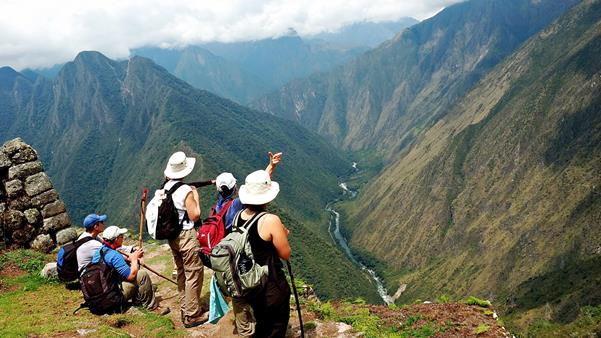
The 14-kilometre trek is rated moderate. The trek climbs to 2,700 metres (Wiñay Wayna) before descending to 2,400 metres (Machu Picchu). As this trek is pitched at a much lower altitude than others, you should be able to acclimatise easier.
A snapshot of this trek includes:
Day one: Cusco or Ollantaytambo to Aguas Calientes
Take the train from Ollantaytambo and enjoy views of Urubamba Valley before reaching Wiñay Wayna (Forever Young). From this point, you will hike through one of the best-preserved sections of the trail, passing a cloud forest bursting with fascinating flora leading to the entry of The Sun Gate with magical views of Machu Picchu. You’ll return to Aguas Calientes by bus for your overnight stay.
Day two: Aguas Calientes to Ollanta or Cusco
Return to Machu Picchu Sanctuary by bus. Optionally (at extra cost and must be booked in advance), you can climb to the summit Huayna Picchu, offering the best views of the citadel.
Other top treks include:
Seven-day Salkantay Inca Trail to Machu Picchu
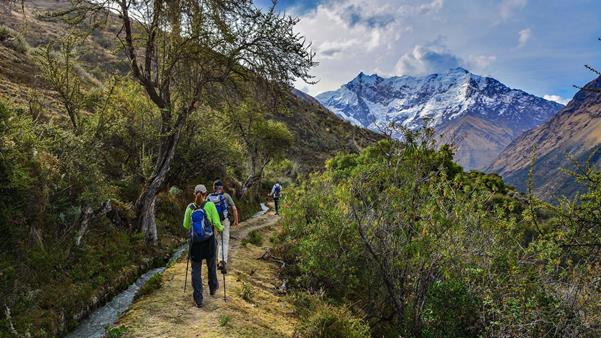
This normally takes a week and is ideal if you want to combine a quieter less trodden route with a visit Machu Picchu.
For the first four days you will be surrounded with magnificent scenery and will rarely see other hikers. The name Salkantay means 'Savage Mountain' which aptly describes the swirling clouds that rise up from the jungle lowlands and engulf the peak.
The trek is only a little more difficult than the Inca Trail, and horses can be used for the first four days to carry supplies. Since horses are not allowed on the Inca Trail, you'll swap over to using human porters for the final section.
On the fifth day you join up with the Inca Trail at Wayllabamba and continue to Machu Picchu arriving early on day seven.
Lares Valley Treks
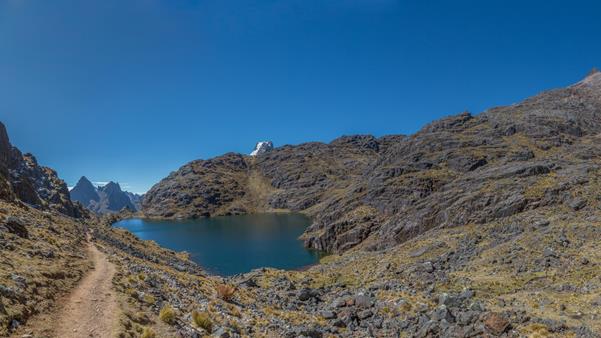
If you’re looking to head off the beaten track and escape to a part of Peru that hasn’t changed for 500 years, then a trek through the spectacular scenery of the Lares Valley is a must.
This remote and rarely visited region offers you an insight into the real lives of the Andean farmer, dressed in their traditional brightly coloured ponchos. You'll have the opportunity to see thatched stone houses surrounded by herds of llamas and alpacas. Inside the houses you'll see guinea pigs running loose.
Choquequirao Trek
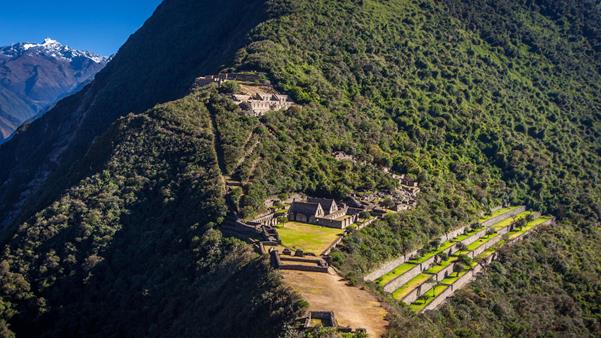
Take the five-day hike to the Inca settlement of Choquequirao while you can still enjoy its peace and tranquillity. The site, less than 40 miles from Machu Picchu and known as its “sacred sister” will soon be vying for visitors with the opening of a road and $50 million cable car which will glide you there in 15 minutes.
Choquequirao, made up of 1,800 hectares of stairways, terraces and plazas, is currently only accessible by foot and receives about a dozen visitors a day.
The trek, recommended for experienced hikers, takes you from Cusco high above the Apurimac River up towards the truncated hilltop which sits at 3,050 meters in the spurs of the Vilcabamba mountain range.
Take to the rails
Arrive at Machu Picchu in style aboard the Belmond Hiram Bingham. The service has won the best train in the world by the readers of Condé Nast Traveller and voted by NBC as one of the 10 most wonderful train journeys in the World. The train has four dark racing blue wagons and carries 84 passengers. Enjoy the mountain views from the observations wagon and toast the start of your expedition with a pisco sour in the dining car.
You can also travel on the Vista Dome train, which as the name suggests, is a service which has carriages that maximise the views of the Sacred Valley.
- The Andean weather can be unpredictable, despite the sharp divide between dry and wet seasons. The dry season runs from May to October or November (the best time for this amazing trek); the rainy season goes from December through April.
- You can select from three private service options, standard, premium and deluxe. The different levels will determine the following; type of tent, dining options, thickness of mattress, numbers per shower and toilet tent and amount of luggage carried by a porter. For those opting for the premium or deluxe package, champagne will be served at the iconic Sun Gate.
- Camping isn’t the only accommodation option available – for those who would rather, there is a myriad of options of lodges available along the route.
- A small day pack to carry your sunglasses, sun hat, sun and insect lotion and water bottle
- Warm sweat pants to wear around the camp and complete change of clothes
- Trekking shoes (please break them in well ahead of time) and trainers
- Coramina (Glucose)
- Original passport
- A flashlight and batteries
- Peruvian currency (soles) for tips and small purchases
- Backpack with rain shelter
- Sandals (for showers and hot springs)
- Bathing suit (for the hot springs in Aguas Calientes)
- Camera (wrapped in plastic bag), a flash light and batteries
- Some snacks like chocolate bars and dry fruit

